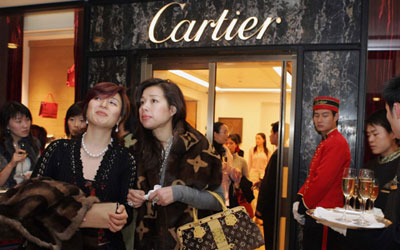ADB Report Angers Middle Class in China

The Asian Development Bank's (ADB) recent publication of, Key Indicators for Asia and the Pacific 2010 which includes a chapter titled, “The Rise of Asia’s Middle Class” resulted in a negative backlash from Chinese citizens who have a difficulty accepting the report’s definition of middle-class as one who spends between 2 to 20 USD a day. While critics are in agreement that the ADB definition of middle-class is incorrect, there has yet to be a consensus in China as to what standard of living constitutes middle-class.
In an opinion piece translated into English and published on China.org, author Ye Tan states, “$2 is barely enough to buy a chicken burger in China, not to mention basic services like water and electricity.” His example seems a bit odd considering how much food one can buy in China for the cost of a KFC chicken burger and his attitude a bit extreme considering the report does not claim that $2 is a large sum of money. Due to the lack of a standard definition of what it means to be middle-class, the ADB has chosen to use an “absolute approach, defining the middle class as those with consumption expenditures of $2-$20 per person per day in 2005 Purchasing Power Parity.”
Ye Tan is not the only one to have jumped to conclusions about the report. In an opinion piece for the Economic Observer, Chen Tairan writes, "The Asian Development Bank exaggerates the scope of China's middle class in order to label it a huge market and a major power that should bear greater responsibility in the international community.” Chen Tairan’s comments appear unreasonable when reading the section of the ADB report which states, “The majority of the Asian middle class still falls in the $2-$4 range, leaving them highly vulnerable to slipping back into poverty due to economic shocks.” How can the report be purposefully exaggerating the scope of China’s middle class when it recognizes that the majority of the Asian middle class is still at risk for slipping back into poverty? The report does not try to conspiratorially make China bear more international responsibility, but rather simply stresses the importance of implementing policies that will help strengthen the middle class in Asia and cope with the environmental consequences of its growth.
A report in People’s Daily provides a different description of the middle class in China: “A sizeable number of people in China, who are classified as being in the middle class, are worried every day about owning or paying for a home, a car and dealing with credit cards." If these behaviors are inconsistent with middle class status then we will have to severely thin out the ranks of those calling themselves middle class all over the world. This description shows a monumental misunderstanding of what the middle class is, or at least a confusion about what people outside of China use middle class to refer to.
In another article addressing the middle class issue, the Global Times reports a survey conducted on Sina.com which shows out of the 13,887 surveyed, 60.6 percent believe a person in the middle class should have a monthly salary over 12,000 yuan. I find these results a bit shocking considering that many of the people I know in Beijing, one of the most expensive cities in China, live quite comfortably on less than a third of 12,000 yuan a month.
Perhaps years of watching Friends and pirated Hollywood movies has skewed perceptions in China of what it means to be middle class and has increased sensitivity among those who feel they do not fit the bill. Maybe Chinese citizens will not be content being labeled as middle class until they can own a home, afford quality education, and make their car and credit card payments on time. Even if this is the case, critics should take the time read through and understand a report before criticizing it.
Image
Red Luxury
The views posted here belong to the commentor, and are not representative of the Economic Observer |
Interactive
Multimedia

- EEO.COM.CN The Economic Observer Online
- Bldg 7A, Xinghua Dongli, Dongcheng District
- Beijing 100013
- Phone: +86 (10) 6420 9024
- Copyright The Economic Observer Online 2001-2011
















